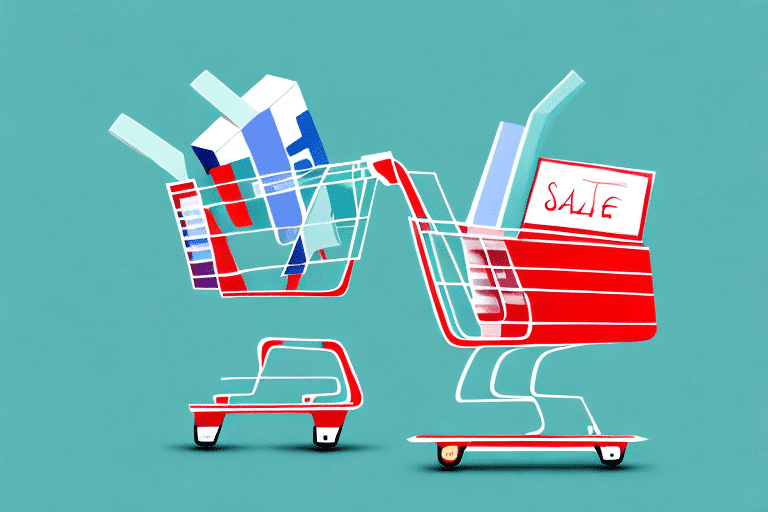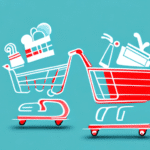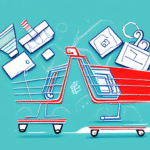The Best Cart Abandonment Emails to Help You Recover Lost Sales
Cart abandonment is one of the biggest challenges for e-commerce businesses. Statistics show that approximately 70% of shopping carts are abandoned before the customer completes the purchase, representing a significant loss of potential revenue. However, cart abandonment emails can help you recover some of those lost sales. In this article, we will discuss the most effective cart abandonment email strategies to help you recover lost sales and increase your conversion rates.
Why Cart Abandonment Emails are Important
When a customer adds products to their cart but does not complete the purchase, reaching out to them is crucial. Cart abandonment emails are a powerful way to inform customers about their incomplete purchases and encourage them to return and complete the transaction. They allow you to connect with your customers and offer a personalized shopping experience.
One of the main benefits of cart abandonment emails is that they can significantly increase your conversion rates. By reminding customers of the items they left in their cart, you can encourage them to complete the purchase and ultimately boost your sales. Additionally, these emails can help you identify any issues or obstacles that may be preventing customers from completing their purchases.
Another advantage of cart abandonment emails is automation. Once you set up the email sequence, the system handles the outreach, allowing you to focus on other aspects of your business while still ensuring you reach out to potential customers and maximize sales opportunities.
Understanding the Psychology Behind Cart Abandonment
Cart abandonment is a common and multifaceted issue with several underlying reasons. Customers may change their minds at any point during the purchasing process, often just before checkout. Reasons include a lack of trust, high shipping costs, or complicated checkout processes. Understanding these factors helps in designing cart abandonment emails that resonate with your target audience and encourage them to complete their purchase.
Distractions during the checkout process can also lead to cart abandonment. Customers might get sidetracked by pop-up ads, social media notifications, or phone calls, causing them to abandon their cart. To combat this, it's essential to create a distraction-free checkout experience by removing unnecessary form fields, simplifying the checkout process, and minimizing external links or ads on the checkout page.
Crafting Effective Cart Abandonment Emails
Writing a successful cart abandonment email requires the right messaging, tone, and design. You need to provide value and ensure that the email captures your customer's attention. A good email should include a catchy subject line, a clear call-to-action (CTA), personalized content highlighting the benefits of the product they left behind, and features that make the customer feel attended to or motivated to complete the purchase.
Best Practices for Subject Lines
The subject line is the first thing customers see. It needs to be compelling, attention-catching, and relevant to the email content. Avoid spammy phrases and use language that resonates with your audience. Personalization, such as including the customer's name or referencing their previous interactions, can significantly increase open rates.
Personalization Techniques
Personalization techniques like using the recipient's name or purchase history can increase open rates and conversions. Tailor the email content based on the customer's cart items, browsing history, and preferences to create a more engaging experience.
Timing Your Emails
Timing is crucial for the effectiveness of cart abandonment emails. Sending the email too soon may seem pushy, while waiting too long might result in the customer losing interest. Ideally, send the first email within an hour of cart abandonment, followed by subsequent reminders at strategic intervals.
Strong Call-to-Action (CTA)
The CTA is a critical component of your cart abandonment email. Use persuasive language and an attractive design that reflects your brand's voice. Place the CTA prominently, preferably above the fold, making it clear and straightforward to understand. Remove any distractions that could deter the customer from taking action.
Optimizing Your Cart Abandonment Strategy
Implementing A/B Testing
A/B testing allows you to compare different versions of your cart abandonment emails to identify what works best. Test various subject lines, CTAs, designs, and copy to determine which elements drive higher engagement and conversions.
Measuring Success
Track and measure the success of your cart abandonment email campaigns using metrics like open rates, click-through rates, conversion rates, revenue per email, customer retention, and average order value. Analyzing these metrics helps optimize your strategies and make data-driven decisions.
Common Mistakes to Avoid
Avoiding common mistakes can significantly improve your email campaigns. These include using spammy subject lines, being too pushy in the copy, using irrelevant content and designs, and not offering enough value or incentives to the customer.
Case Studies
Analyzing successful case studies can provide valuable insights into effective cart abandonment strategies. For example, Shopify's case studies offer real-world examples of how businesses have improved their conversion rates through optimized cart abandonment emails.
Enhancing Emails with Additional Techniques
Creating a Sense of Urgency
Urgency can motivate customers to complete their purchases. Incorporate time-sensitive offers, mention low stock levels or limited availability, and use countdown timers to encourage quick action. However, avoid creating false urgency, which can harm your brand's credibility.
Using Incentives and Discounts
Offering incentives like discounts or free shipping can provide the extra push needed to convince customers to complete their purchase. Use these incentives strategically to appeal to your customer's interests and needs.
Integrating Social Proof
Social proof, such as testimonials, reviews, ratings, or user-generated content, can build trust and credibility. Including social proof in your cart abandonment emails shows customers that others have trusted and purchased from you, increasing the likelihood of conversion.
Addressing Customer Concerns
Addressing potential customer concerns and objections within your emails can help alleviate hesitations. Provide answers to frequently asked questions, describe your return policies, warranties, or guarantees, and use reassuring language to make customers feel confident about completing their purchase.
Following Up
For customers who don't respond to the initial abandonment email, follow-up emails can be highly effective. Use a polite and friendly tone, offer additional incentives, or provide personalized information to encourage the customer to complete their purchase. A multi-stage follow-up approach often yields the best results.
Combining Cart Abandonment Emails with Retargeting Ads
Retargeting ads complement cart abandonment emails by reinforcing your message across different platforms. Use retargeting ads to remind customers of their incomplete purchases while they browse other websites, social media platforms, or search engines. Ensure that the ad formats align with your brand's identity and messaging for a cohesive customer experience.
Conclusion
Cart abandonment poses a significant challenge for e-commerce businesses, but with the right strategies, you can recover lost sales and increase your conversion rates. Crafting effective cart abandonment emails requires careful consideration of timing, messaging, and design. By implementing personalized, timely, and well-structured email campaigns, you can significantly improve your chances of recovering abandoned carts. Additionally, leveraging techniques like A/B testing, social proof, incentives, and retargeting ads can further enhance your recovery efforts. Use the insights and strategies provided in this article to optimize your cart abandonment email campaigns and boost your business's revenue.




















